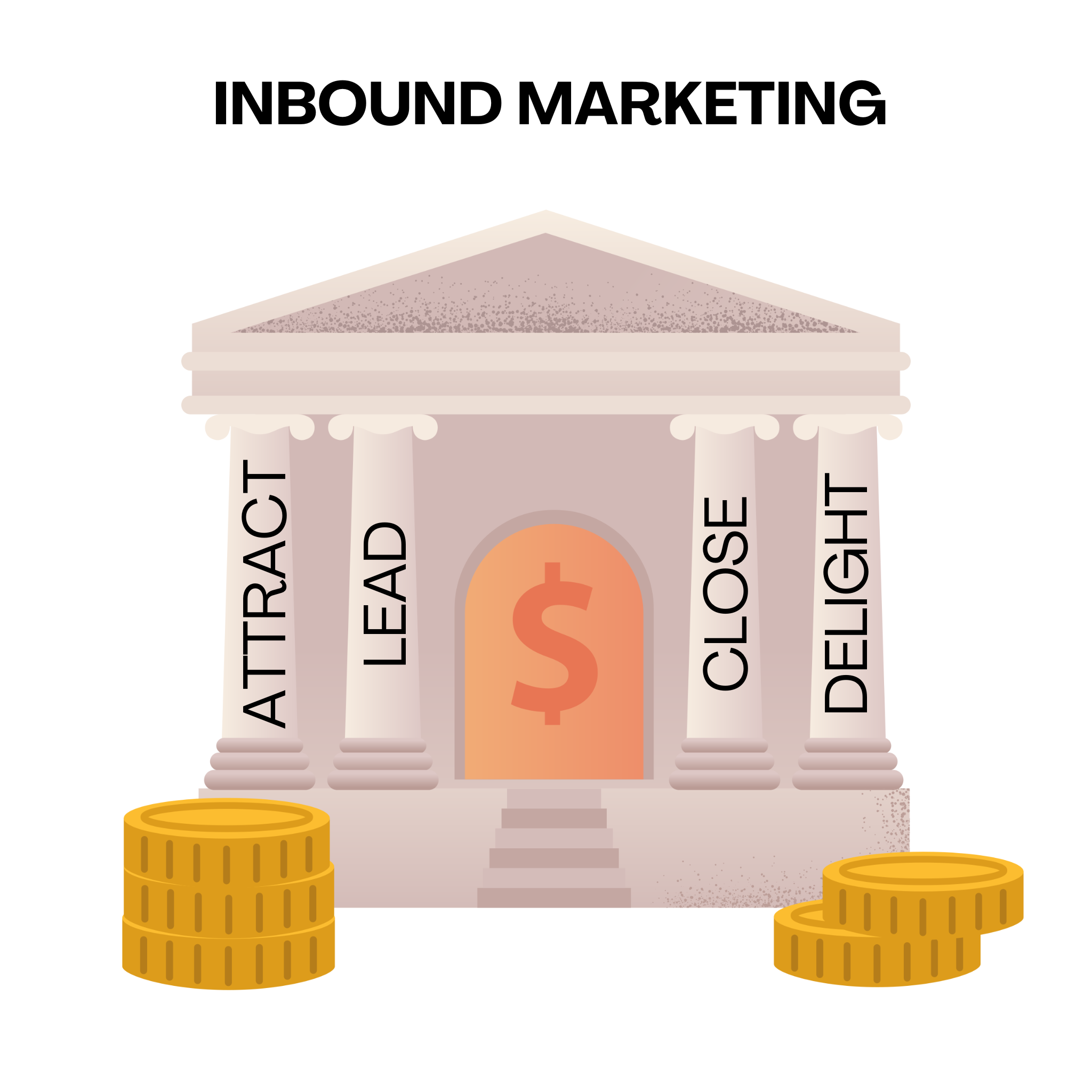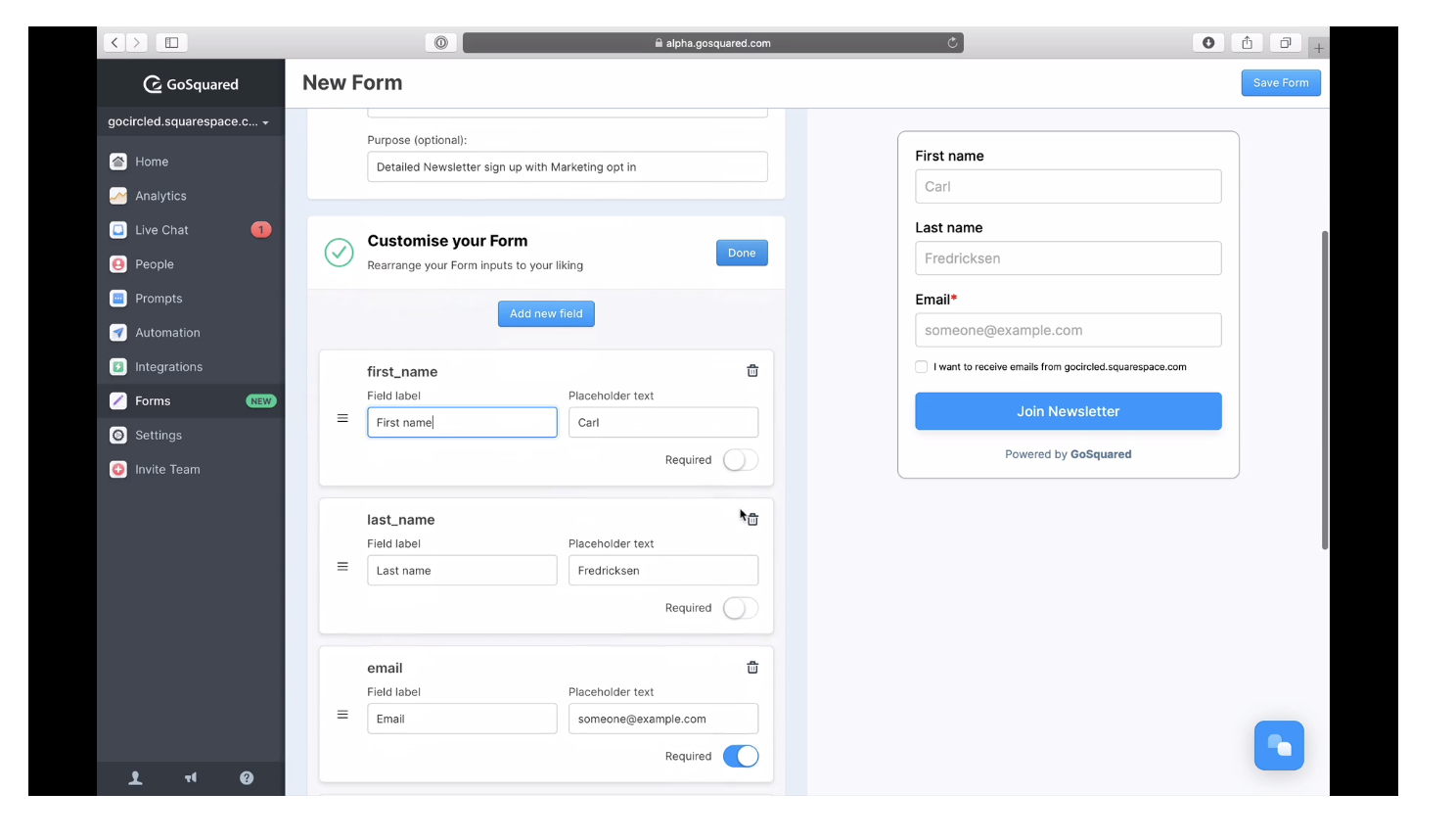Inbound marketing is widely considered one of the best ways to turn strangers into both promoters and customers for your business.
At its core, inbound marketing is about putting the needs of your users first in order to attract them to your brand. This is in stark contrast to outbound marketing, which looks to speak to everyone in a more direct, and sometimes intrusive way. Although traditional marketing is still valuable, the problem is that it offers no guarantee it will be effective, especially without audience segmentation.
Plus, in today’s world, your customers are smarter than ever. They know to be sceptical, and you can guarantee they’ll do their research before buying your products or services. Therefore, traditional marketing often leaves them with too many unanswered questions.
On the contrary, inbound marketing lets the masses come to you. It’s their decision to interact with your content and ultimately your brand, because what you have to offer is attractive or inquisitive to them, without having to force their attention. The result means that when they do convert, it feels like their decision making for a much more natural and satisfactory sales process.
So what exactly is inbound marketing, how do you implement it, and why is it worth it? Let’s break inbound marketing down so that you can use it to grow your business.
What is inbound marketing?
Inbound marketing is any form of marketing you create that your users actively seek out. It is content that educates, entertains or inspires your customers.
For example, you came across this post of your own free will – meaning this is also an example of inbound marketing. It’s not a social media advert, TV campaign or even radio advert you were presented with without any say. You wanted to be here. Welcome, by the way! (Be sure to subscribe if you like what you see).
We assume you sought out this post because you are interested in inbound marketing. As it’s a topic that’s on your mind, you are more likely to purchase a related product, or even recommend this post, versus if it appeared randomly when you have no interest or understanding of the topic. The same applies for any similar content you may research.
Inbound marketing examples:
- Blog posts
- Ebooks
- Expert interviews
- Guides
- Infographics
- Newsletters
- Pillar pages & cluster topics
- Podcasts
- Webinars
- YouTube videos
With any of the above, it’s your choice to find such content or download it when offered. So although these formats still count as marketing, they are not the in your face style of marketing that delivers a message whether you are interested or not.
They also look to add value to the user, especially with the likes of informative cluster topics or entertaining podcasts. We even have our very own free resources page on GoSquared, covering everything from free HTML cheat sheets to an ebook on how to master email automation as a SaaS business. All helpful content if you want to learn more about these topics.
You may also be familiar with the concept of researching a topic on YouTube or downloading a free course to sharpen your skills elsewhere on the internet. This is also inbound marketing, and what’s most intriguing is that instead of the exchange being one-sided, the user also feels as if they have gained something, even though what they are actually interacting with is a strategic marketing campaign. It builds both value and trust in equal measures.
Enjoying this post so far? Sign up for the FREE EcoSend newsletter!
Origins of inbound marketing
If you’ve never heard of inbound marketing, you’re not alone. The phrase was coined by HubSpot back in 2006 as an antithesis to outbound marketing.
Psst! On that note, see: 12 Affordable HubSpot Alternatives You Need To Know In 2022.
Inbound marketing makes your customer feel served rather than sold. It was the creation of growth software such as HubSpot and indeed GoSquared that called for a new way of doing things.
This is especially the case as data allows us to better understand our audiences, meaning we have a much better idea of who we are talking to and what they will best react to. Taking the guessing game out of marketing streamlines costs and boosts profits.
Inbound vs outbound marketing
It’s easy to get confused between inbound and outbound marketing since only one word separates the two! However, both in theory, and in practice they couldn’t be more different from each other.
Traditional marketing is like using a sledgehammer to break through the noise and get in front of consumers. While inbound marketing is like using a magnet to attract potential customers to you.
Although both inbound and outbound marketing are well, examples of marketing, one takes a direct approach, while the other takes the time to consider the needs of users on a deeper level, to show that the products or services on offer is the solution they are looking for – a conclusion they are able to reach on their own in a much more organic way.
Here’s a further breakdown of the differences between inbound and outbound marketing.
Inbound marketing
You’ll notice that inbound marketing starts with the word ‘in’. That’s because people are coming to you, rather than you going to them. They’ve landed on your piece of content because it offers something they have a genuine interest in, and they can’t get enough. They might even share it with their friends when they are done, hence inbound marketing creates promoters as well as customers as we mentioned at the start.
Outbound marketing
Now onto the ‘out’ in outbound marketing. This involves you figuratively holding that megaphone to tell people about your products and services. You might be posting on social media, appearing in a TV advertising slot or plastered over a billboard. Either way, you are controlling the narrative and showing your advert to the masses, whether they are interested or not.
Also, with outbound marketing, you likely have to pay for that advertising slot in a magazine, on TV or with social media campaigns. In contrast, many inbound techniques are limited to the production costs, since you aren’t paying to reach a certain audience – the audience is coming to you!
Outbound marketing examples
- Billboard campaigns
- Cold calling
- Doorstep selling
- Email campaigns
- Flyers
- Magazine adverts
- Online advertising
- Radio advertising
- Social media advertising
- TV advertising
It should be noted that there’s nothing inherently bad about any outbound marketing techniques. In fact, they can work beautifully in tandem with inbound techniques.
However, inbound marketing allows you to communicate with your customers in a more natural way. So instead of just shouting a message at them, you’re allowing them to feed their curiosity. They get to know your brand at their own pace, with their permission.
As we mentioned above, a lack of audience segmentation is where outbound marketing can fail. That’s because trying to speak to everyone with the same message doesn’t always work. Imagine a billboard in Times Square as one example. Yes, it will be seen by millions, but will each of those millions be interested in that product, let alone go on to buy it?
With an inbound marketing technique such as a product review on a blog or on YouTube – users are already showing their interest in that product, making it more likely they’ll convert if they like what they read or see. Inbound marketing offers a more subtle yet highly intuitive alternative.
The 4 core pillars of inbound marketing
Every building needs solid foundations to hold it up, and inbound marketing strategies are much the same. By taking the time to identify and refer back to the following 4 core pillars of inbound marketing, your campaigns are far more likely to stay on track.
Attracting visitors
Step one is to attract visitors to your site by producing great content that’s relevant to your industry and the product or service you sell.
It’s not just about producing content and hoping customers will knock on your door. You have to do everything you can to maximise the value of that content.
A few ideas include:
- Ensuring you are optimising pages for search engines.
- Building a presence on social media platforms like Twitter and Facebook.
- Find ways to repurpose your content for greater reach – like putting a video on Youtube and Instagram.
- You could even try running an event to attract your ideal audience.
Lead conversion
Step two is to convert the visitors on your site into leads and into people that you can contact again and build a rapport with.
There are a bunch of ways to convert visitors into leads. A few ideas include:
- We might be a little biased, but we’ve found using live chat software on your marketing site is one of the best ways to engage visitors and turn them into leads.
- Add call-to-action buttons (CTAs) at the end of your blog posts to encourage visitors to signup for your mailing list.
- Using A/B testing to experiment with different landing pages to optimise conversion rates across your site.
- Producing content that is behind lead-generation forms. This tip helps you understand who is downloading your content and find potential customers.
See: GoSquared Engage – start your free trial today!
Closing sales and winning customers
Step three is to use content and inbound methods to convert leads into paying customers. Find the people that fit best and avoid being an irritation to those who do not.
A few ideas for closing more sales with inbound techniques:
- Trigger drip email campaigns for existing leads with further relevant content.
- Provide easy calls to action in your newsletter and on your blog to trial your service.
- For developer-focused services, ensure your API documentation answers the problems potential customers might have during their onboarding.
Delighting customers and creating fans
Step four is perhaps the least talked about, but it’s no less important.
Delighting your customers ensures they stay with you for longer and encourages word-of-mouth buzz and the opportunity to win more new customers.
A few ideas for delighting your customers:
- Connect with them socially. Follow your customers on Twitter and offer them a clear way to reach out and contact you.
- Proactively offer support to customers. If a customer is struggling with a specific feature or with getting started and hasn’t reached out to you via email, try reaching out personally to offer assistance.
- Measure your impact by tracking NPS – Net Promoter Score. NPS is calculated based on asking your customers how likely they are to recommend your product to a friend on a scale of 1 to 10. Hint: anything below 7 is not good enough.
Why inbound marketing?
The reasons to adopt an inbound marketing strategy are endless. The key thing to bear in mind is that the consumer has changed over the last 10 years. The rise of the web and mobile have brought the world’s information to every consumer’s fingertips.
Blasting out a marketing message with posters, TV, radio, and newspaper advertising is not the only way to get in front of customers. In fact, the traditional approach is often a very expensive way to attract customers because it’s so broad – you can waste a lot of money getting in front of people who might never buy your product or service.
If you make customers unhappy on the Internet, they can each tell 6,000 friends – Jeff Bezos
Inbound marketing is about attracting potential customers to you to find out more about you. Inbound is not about interrupting people, it’s about being there and ready when a consumer decides they need you. Inbound is about being the guiding light when they need help and assistance. You should aim to produce content that is so valuable and so relevant that the consumer of that content feels compelled to learn more.
We are well into the 21st century. The consumer has changed. Inbound marketing is a proven way to reach the modern consumer in a reliable, measurable, and more affordable way.
5 key tips for inbound marketing success
Now you know what inbound marketing is, it’s time to perfect your skills. The process starts with identifying who you are speaking to, aligning your content to suit and closely monitoring your success.
#1 – Decide who and what you’re fighting for
Above all else, figure out who and what you’re fighting for: define your ideal customer and obsess over understanding them. Too many businesses spend a lot of money and time on producing content for blogs and social media but waste it because it fails to resonate with their value proposition.
#2 – Lead your tribe
Following on from point 1, once you know who you’re fighting for, make sure you produce content that leads the thinking in that space. No one cares about mediocre blog posts. Strive to be the thought leader in your industry. Be the source of news, inspiration and learning for your potential customers.
Producing content takes time but isn’t hard. Producing content that causes people to think, and that changes the way people view the world around them, that’s really difficult. The upside is enormous and that is where the opportunity lies.
#3 – Create a content schedule
One of the biggest challenges with forming an inbound marketing strategy is maintaining consistency.
It may sound simple, but taking the time to put together a calendar with your upcoming marketing activities can massively help you to stay organised.
Don’t just put your upcoming blog posts in the calendar. Add key industry events, put relevant holidays in there and include anything that constitutes a good reason or opportunity to share your message.
#4 – Amplify your content
Don’t just write a blog post. Promote it. There’s a huge amount of opportunity in amplifying and re-using your existing content.
If you have a blog, consider repurposing your content for other platforms and social networks. For example, try posting older-but-still-relevant blog posts onto the Medium blogging network to re-energise them.
If you have a mailing list, don’t miss the opportunity to email your existing email subscribers about new posts and content – if they’ve already opted in to hear more from you, it’s the perfect opportunity to bring them up-to-date with your latest content.
#5 – Measure everything but choose a few key metrics to focus on
As with any form of marketing, it’s critical that you measure the process from start to finish.
Choose the key metrics that matter and track them. Looking at the inbound marketing funnel can really help you to understand where you can improve and what to measure at each step.
Is your Twitter follower count a vanity metric? Not necessarily – it’s entirely possible that as your followers grow, so do your inbound leads, and ultimately your number of customers. You will only know if you experiment and measure the results.
Measurement is the first step that leads to control and eventually to improvement. If you can’t measure something, you can’t understand it. If you can’t understand it, you can’t control it. If you can’t control it, you can’t improve it – H. James Harrington
Remember – it’s hard to improve what you don’t measure.
See: GoSquared Analytics – start your free trial today!
Inbound marketing FAQ
We’ve answered some of the most popular questions about inbound marketing below. Don’t see your query? Reach out to us at any time for tailored information on how to grow your business with inbound marketing, plus all the other marketing techniques made possible with GoSquared!
Why is goal setting important for inbound marketing?
Any kind of marketing needs a solid plan behind it, and inbound marketing is no exception! With inbound marketing, you aren’t directly speaking to your customers – you’re letting them come to you because what you have to offer appears to be relevant or at least interesting to them. So when they get there, what they see must satisfy their needs and encourage them to take further action. This could be anything from signing up to your mailing list or skipping straight to purchasing a product. Either way, the structure of your content must facilitate this and goal setting is where this process starts.
How can email marketing fuel your overall inbound strategy?
Although email marketing is technically outbound marketing, users are still going to decide to sign up to receive your emails. You can send this energy back to your inbound marketing, by including content in your emails you think will be of interest to your users. Perhaps a great podcast you’ve recorded, a super helpful blog post on a trending topic, or even something that gathers the opinions of your users. Just be sure to think about what will add value in the eyes of your subscribers to keep things inbound friendly.
Is PR inbound or outbound marketing?
The answer depends entirely on how a PR campaign is delivered. If you’re sending a press release to anyone who will listen, this is outbound. But, if you create a blog post that looks to solve an issue for your customers, and then at the end mention it’s a promotional piece for your new product – you’ve allowed the audience to come to you, making your PR campaign inbound. The approach you choose needs to consider what will be most impactful, which could include a combination of both inbound and outbound techniques.
Why is inbound marketing important?
Inbound marketing is important because it gives you another string to your bow. It means you don’t have to rely on one type of communication anymore, especially if it may not offer up the best results for your campaign, let alone connect with the right people. Inbound marketing is a magnet rather than a megaphone, and as we know, those who shout the loudest aren’t always correct. Instead, inbound marketing allows your audience to gravitate towards you.
Master your inbound marketing with GoSquared
Acquiring leads, building relationships, converting deals and delighting customers aren’t just the core pillars of inbound marketing – they are our key offerings of GoSquared’s marketing automation.
As a leading growth software tool, we’re here to help you not only better connect with your customers, but also best understand them. So whether you’re interested in inbound marketing techniques, or want to also perfect your outbound marketing through audience segmentation, we’ve got you covered.
We have solutions for engaging better with your users, getting accurate real-time data and much more! Schedule your free demo of GoSquared today and see what makes us different. Plus, learn exactly how our tools and products can benefit your marketing and sales goals specifically. Inbound marketing has never been easier!






